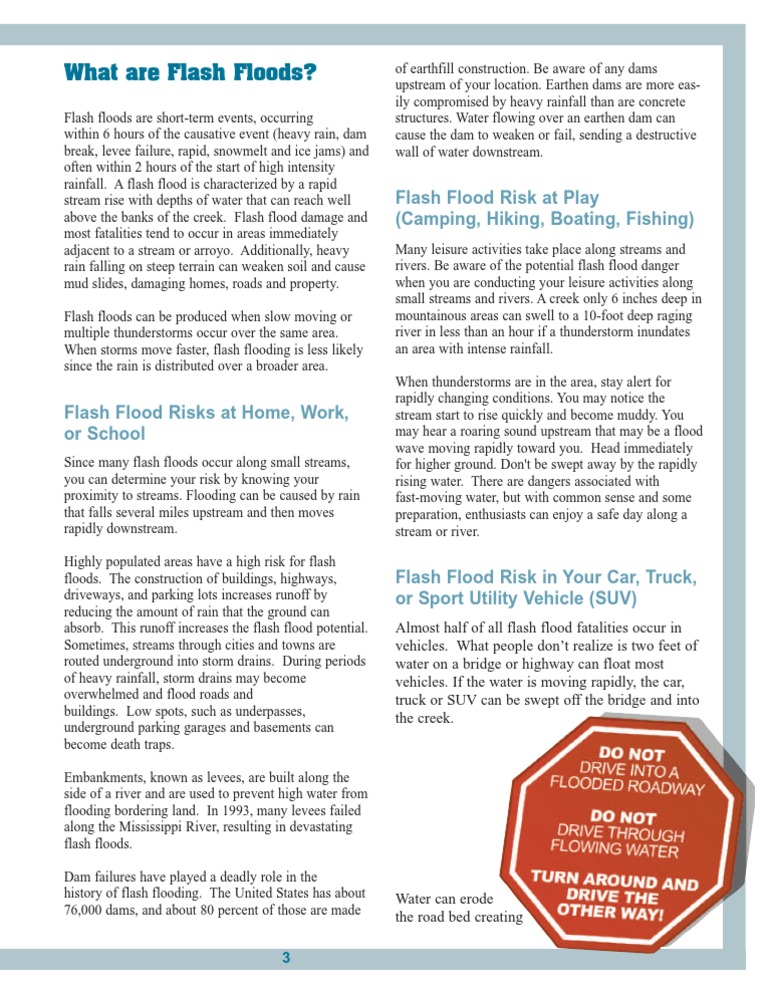Flood Alerts Explained: Understanding And Preparing For High Water

Table of Contents
Flood alerts are timely notifications issued by meteorological and governmental agencies warning of impending or occurring flood events. They are your lifeline, providing crucial information to allow for timely evacuation, property protection, and ultimately, saving lives and minimizing property damage. This guide will equip you with the knowledge and tools to understand and respond effectively to these critical alerts.
Types of Flood Alerts and Warning Systems
Flood alerts come in various levels, indicating the severity and immediacy of the threat. Understanding these levels is vital for taking appropriate action. Commonly used alert levels include:
- Flood Watch: Conditions are favorable for flooding. Stay informed and be prepared to take action if necessary.
- Flood Warning: Flooding is occurring or is imminent. Take action immediately.
- Flood Emergency: A severe and life-threatening flood is happening. Immediate action is critical to your safety.
These alerts are disseminated through various channels:
- NOAA Weather Radio: A dedicated radio frequency providing continuous weather information, including flood alerts.
- Mobile Alerts: Emergency alerts sent directly to your smartphone through Wireless Emergency Alerts (WEA). Ensure your phone's alert settings are activated.
- Local News: Television and radio broadcasts provide up-to-the-minute updates on local weather conditions and flood warnings.
- Government Websites: Websites such as the National Weather Service (NWS) and FEMA provide detailed flood information and forecasts.
Geographic Variations: Alert systems and terminology may vary slightly depending on your location. Always check with your local emergency management agency for specific information and guidelines relevant to your area. Familiarize yourself with your local severe weather alerts and emergency broadcast systems.
Understanding Flood Risk in Your Area
Knowing your personal flood risk is paramount. Many factors contribute to flood risk, including:
- Proximity to Rivers and Waterways: Areas near rivers, streams, and coastlines are inherently more vulnerable to flooding.
- Drainage Systems: Inadequate drainage infrastructure can exacerbate flooding in certain areas.
- Elevation: Lower-lying areas are at a higher risk of flooding than higher ground.
- Soil Type: The type of soil can influence how quickly water is absorbed, impacting the severity of flooding.
Assessing Your Risk:
- Use resources like FEMA's flood maps () to determine your flood zone. This will tell you your risk level and associated flood insurance requirements.
- Consider your home's elevation and proximity to water sources.
- Check with your local government for historical flood data and information specific to your neighborhood. Identifying your flood zone is key to accurate flood risk assessment.
Creating a Flood Preparedness Plan
A comprehensive flood preparedness plan is your best defense. This plan should include:
- Evacuation Routes: Identify multiple escape routes from your home, considering potential road closures.
- Emergency Supplies: Assemble a flood emergency kit including:
- Water (at least one gallon per person per day for several days)
- Non-perishable food
- First-aid kit
- Flashlight and batteries
- Important documents (copies of insurance policies, identification, etc.)
- Medications
- Communication Plan: Establish a plan for contacting family and friends in case of separation.
- Property Protection: Take steps to protect your property before a flood, such as moving valuables to higher ground and securing outdoor items.
Responding to a Flood Alert
Your response to a flood alert will depend on the alert level:
- Flood Watch: Monitor the situation closely, prepare your emergency kit, and stay informed about weather updates.
- Flood Warning: Begin evacuating if instructed by authorities. Move valuables to higher floors or a safe location.
- Flood Emergency: Evacuate immediately if instructed. Seek higher ground and follow directions from emergency personnel.
Safety Precautions:
- Never drive or walk through floodwaters. Floodwaters can be deeper and faster-moving than they appear, containing hidden dangers and debris.
- Avoid downed power lines. They pose a significant electrical hazard.
- Be aware of potential water contamination. Floodwaters can be contaminated with sewage and other hazardous materials.
Staying Safe with Flood Alerts
Understanding flood alerts, assessing your personal risk, creating a comprehensive flood preparedness plan, and responding appropriately are all crucial steps in ensuring your safety and minimizing potential damage. Regularly review and update your flood preparedness plan. Familiarize yourself with the various types of flood alerts and the actions to take for each.
By taking proactive steps and staying informed, you can significantly reduce the risks associated with floods. Learn more about flood alerts in your area and develop a thorough flood preparedness plan using the resources available to you. Contact your local emergency management agency, the National Weather Service (NWS), or FEMA for more information and resources on flood safety and flood preparedness. Don't wait until it's too late—prepare for flood alerts today and protect your family and property.

Featured Posts
-
 What Constitutes A Flash Flood Emergency
May 26, 2025
What Constitutes A Flash Flood Emergency
May 26, 2025 -
 The George Russell Conundrum Will Mercedes Extend His Contract
May 26, 2025
The George Russell Conundrum Will Mercedes Extend His Contract
May 26, 2025 -
 The Hells Angels Their Influence And Impact
May 26, 2025
The Hells Angels Their Influence And Impact
May 26, 2025 -
 Jadwal Moto Gp Inggris 2025 Balapan Pekan Ini
May 26, 2025
Jadwal Moto Gp Inggris 2025 Balapan Pekan Ini
May 26, 2025 -
 A Comedy Writing Masterclass Roland White Reviews Armando Iannuccis Bbc 1 Program
May 26, 2025
A Comedy Writing Masterclass Roland White Reviews Armando Iannuccis Bbc 1 Program
May 26, 2025
